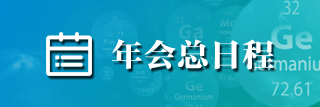分会
第五十三分会:农业化学与农产品
摘要
磁性吸附型纳米缓释复合肥料的制备及其性能研究 李涛1,2,*,闫佳2,吕少瑜2,柳明珠2 1兰州城市学院化学化工学院,甘肃省兰州市,730070 2兰州大学化学化工学院,甘肃省兰州市,730000 *Email: lit16@lzu.edu.cn 随着工业、农业和人民生活水平的不断提高,严重的水体富营养化已经对生物多样性和其他水生生态系统功能构成严重威胁。为了缓解水体的磷富集,满足排放要求,必须进行磷的脱除和再利用。考虑到农业的绿色和可持续发展,利用生物质制备智能材料受到越来越多研究者的关注[1]。 木质素是自然界第二大来源的天然高分子。本课题组通过对木质素的功能化改性,已经制备出一系列多功能缓控释肥料,例如通过静电层层自组装技术制备环境响应型木质素基纳米肥料[2];利用圆盘造粒法制备环境修复型木质素基双层包膜缓释肥料[3];通过席夫碱反应和铁离子的交联作用制备具有高机械强度的可生物降解肥料[4]。 基于此,本文将木质素作为天然高分子原料,通过胺化改性制备了胺化木质素。将胺化木质素表面用Fe3+进行络合,并负载Fe3O4纳米颗粒后制备得到一种高磁感应强度的磁性木质素基纳米颗粒。该纳米颗粒能有效吸附水溶液中的H2PO4−。回收磷之后得到的纳米颗粒能够再次作为纳米缓释复合肥料使用。通过在土壤中的释放研究发现,该纳米缓释复合肥料具有较好的持续释放性能,释放30天后,铁和磷的释放率分别达到67.2%和69.1%。此外,磁性吸附型纳米缓释复合肥料具有较好的磁性回收、再生和循环使用性能,不仅可以极大地降低肥料制备成本,还可以降低土壤受到二次污染的风险,提高养分的使用效率,为绿色、可持续农业的发展和生物质资源的多元化利用提供了新的方向。 Fig. 1 Scheme of synthesis procedure of nanofertilizers 关键词:磁性纳米颗粒;木质素;吸附材料;纳米肥料 参考文献 [1] 李涛,吕少瑜,陈姣,高春梅,张少飞,柳明珠. 高分子学报, 2018, 3, 336. [2] Li, T.; Lü, S.; Yan, J.; Bai, X.; Gao, C.; Liu, M.., ACS Appl. Mater. Inter., 2019, 11 (11), 10941. [3] Li, T.; Lü, S.; Zhang, S.; Gao, C.; Liu, M.. J. Taiwan Inst. Chem. Eng., 2018, 91, 643. [4] Li, T.; Lü, S.; Ji, Y.; Qi, T.; Liu, M.. New J. Chem.. 2018, 42, 19129. Lignin-based Magnetic Nanoparticles for Recovery and Separation of Phosphate and Reused as Renewable Fertilizers Tao Li1,2,*, Jia Yan 2, Shaoyu Lü2, Mingzhu Liu2 1 College of Chemistry and Chemical Engineering, Lanzhou University, Lanzhou 730000, China. 2 College of Chemistry and Chemical Engineering, Lanzhou City University, Lanzhou, 730070, China. Nanomaterials offer opportunities to develop novel adsorbents with advanced adsorption of phosphate at low concentration to prevent eutrophication. However, the adsorption capacity is not high enough, and the recycle process of adsorbents is not efficient and environmentally friendly. In this work, magnetic lignin-based nanoparticles (M/ALFe) were developed and used to adsorb phosphorus to obtain phosphorus-saturated nanoparticles (M/ALFeF). The nanoparticles were then used as renewable slow-release compound fertilizers. First, lignin as a natural polymer was modified by triethylenetetramine (TETA) via Mannich reaction, and then Fe3+ was chelated and Fe3O4 nanoparticles were loaded onto the aminated lignin to prepare M/ALFe. Finally, M/ALFeF were obtained after adsorption of phosphorus. M/ALFe and M/ALFeF were characterized by FTIR, TG, DSC, SEM, TEM, elemental analysis, particle size analysis, zeta potential analysis and XPS. The effects of nanoparticle dosage, solution pH and adsorption time on adsorption were investigated. Adsorption kinetics and adsorption isotherm experiments indicated that the adsorption was agreed well with the pseudo-second-order and Temkin model, respectively. The cumulative release of Fe and P from M/ALFeF increased gradually and reached to 67.2 % and 69.1 % in soil after 30 days, respectively. After the release of nutrients, M/ALFeF can be separated conveniently by magnet from water or soil with a high recovery ratio and regenerated for phosphate recovery again. Therefore, the magnetic lignin-based nanoparticles have a promising application potential as a low-cost, efficiently separated and renewable nanomaterial for applications in wastewater treatment and sustainable agriculture.
关键词
磁性纳米颗粒;木质素;纳米肥料;吸附材料
线上墙报仅限年会已缴费参会代表观看。
您还没有登录,请您先 点击这里登录






